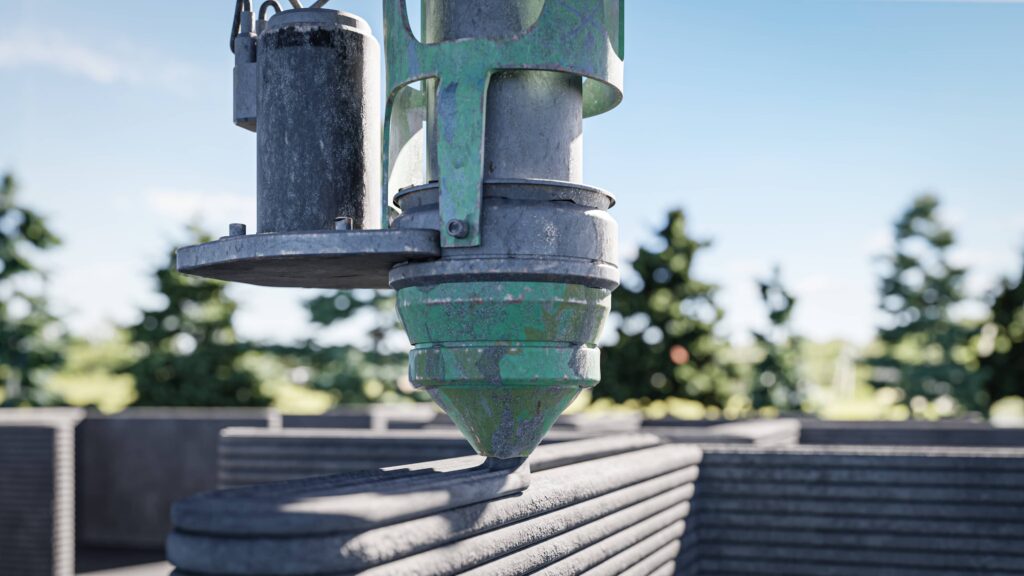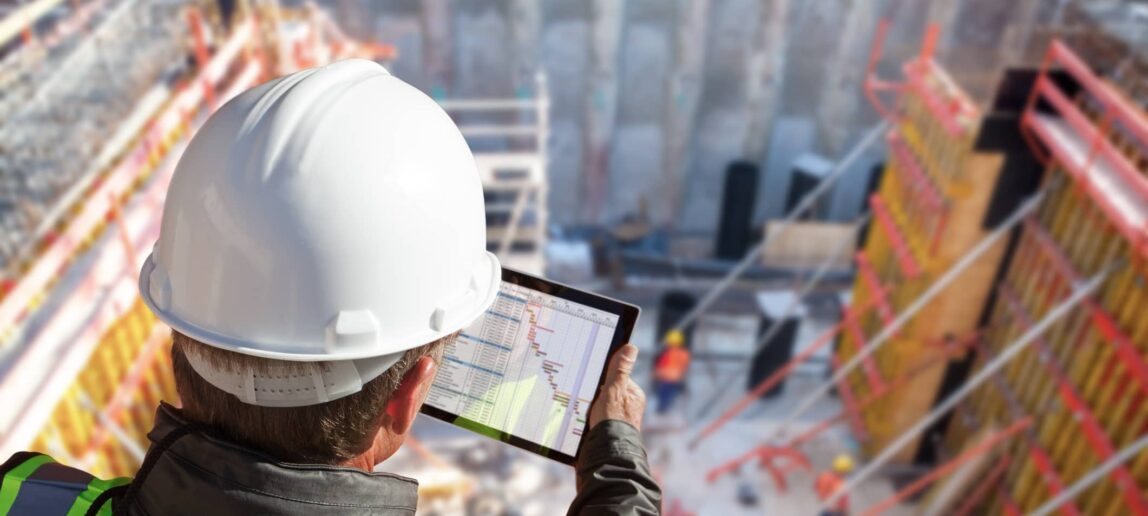Construction Industry Trends: The Future of Construction Management
Embracing the Future of Construction Management: Innovations Worth Exploring
Construction management is a quickly growing field that shows great promise, especially given the unprecedented demand in the construction industry at large — as well as the rapidly advancing technologies and methodologies that can help resolve the field’s most difficult challenges.
However, as new solutions emerge, the role of the construction manager will also evolve. Forward-thinking construction managers will need to possess a wealth of both leadership and technical skills, along with a data-driven mindset that allows them to leverage powerful insights spurred by artificial intelligence and other cutting-edge solutions.
Aspiring leaders who are up to the challenge will have the exciting opportunity to help shape this industry and make a meaningful impact, spurring sustainable building, affordable housing, enhanced safety, and other powerful outcomes.
Eager to make a difference? Below, we provide a detailed construction industry forecast, complete with insights into the most impactful technologies, building materials, and more. Read on to learn about construction industry trends and how they can be leveraged upon earning targeted, graduate-level credentials.
What Does Construction Management Look Like Now?
Before discussing what’s in store for construction management, it is important to recognize how far this field has come in the last several years. Currently, this practice is defined by the Construction Management Association of America (CMAA) as “a professional service that provides a project’s owner(s) with effective management of the project’s schedule, cost, quality, safety, scope, and function.”
As CMAA points out, this is compatible with many project delivery methods, with the construction manager representing the “owner’s interest and provid[ing] oversight over the entire project directly for the owner.”
Insights from the United States Bureau of Labor Statistics (BLS) expand on this theme, explaining that construction managers “plan, coordinate, budget, and supervise construction projects from start to finish” and adding that consultations with clients are also essential.
These definitions clarify the types of tasks and responsibilities modern construction managers take on, and while these will remain similar moving forward, it is increasingly evident that tomorrow’s construction managers will also need to plan and coordinate technological solutions while continuing to supervise subcontractors and collaborate with architects, engineers, and clients.
AI in Construction
The most exciting advancements in construction largely draw on the power of artificial intelligence (AI), which already has a substantial impact on the field but is expected to become even more influential in the next several years. Currently, AI is heavily built into pre-construction efforts, with extensive data sets allowing AI solutions to produce powerful insights. These can play into land use planning and building design optimization.
AI solutions are particularly valuable to construction project managers, who are continually in a race to allocate resources effectively and ensure projects are completed on time and within the approved scope. A number of AI-based project management tools can deliver real-time data analysis while also automating time-consuming tasks like generating reports.

Predictive Analytics
Drawing on historical data to help reveal future trends, predictive analytics represents one of the most impactful developments in construction management technology. Today’s construction leaders can leverage huge data sets that detail everything from productivity and performance to scheduling solutions and budgetary concerns. Many organizations now leverage sensors to collect and analyze even more data.
Insights into topography, meteorological conditions, and supply chain challenges can prove transformative when developing construction project workflows, budgets, or resource management plans. In addition, market data can be integrated to help forecast demand and identify key business opportunities.
Project Planning and Optimization
The cliche about “failing to plan” involving a “plan to fail” rings true throughout the construction industry, where strategic planning can help organizations pinpoint, address, and mitigate key risks while also promoting seamless workflows and strong resource allocation. For this reason, project management is increasingly prioritized throughout the industry.
Throughout the construction project lifestyle, project managers facilitate strong communication and collaboration between stakeholders: clients, suppliers, subcontractors, and more. Their efforts play into every aspect of the construction project lifecycle — including planning, pre-construction, procurement, and so on. During the planning phase, project managers fulfill these essential processes:
- Defining project scope
- Working with estimators to determine the budget
- Creating a project sequence that includes milestones and deadlines
- Developing procurement plans for acquiring services or equipment
- Verifying compliance and obtaining necessary permits
Going forward, construction project management will hinge more on analytics and other advanced technological solutions. These professionals may need to draw greater attention to sustainability and environmental planning, with the intention of achieving project objectives while also limiting the construction industry’s impact on the environment.

Automated Equipment and Robotics
A growing array of automated solutions bring enhanced efficiency and dramatic cost savings to every corner of the modern construction industry. These automated systems play heavily into prefabricated and modular solutions (as we discuss in more detail below) but are also valuable because they help address ongoing labor shortages while optimizing construction processes in challenging environments.
Examples of automated and robotic solutions include:
- Autonomous construction vehicles – Often used for grading, self-driving vehicles operate within predefined spaces, typically while following programmed routes to enhance safety and efficiency. Many construction projects also make extensive use of unmanned aerial vehicles (UAVs) for surveying purposes, with aerial images proving especially useful for initial site analysis and ongoing monitoring efforts.
- Semi-automated mason (SAM) – Masonry has long been one of the most physically demanding aspects of construction, but SAMs provide a viable alternative: automated bricklaying with enhanced precision and at an extraordinary pace. SAMs often work alongside human employees to achieve high build quality while limiting physical strain.
Advanced Building Materials
Robotics and artificial intelligence often attract the bulk of the attention, but they are by no means the only advancements shaking up the construction industry. Building materials are also beginning to evolve, and at this point, we are no longer beholden to the often expensive, unsustainable, or otherwise impractical materials that dominated in years past.
Advanced building materials offer various advantages, which vary according to the types of materials used or the projects that call for them. Many of these materials are more eco-friendly than their predecessors, while others may be more durable or more affordable.
Sustainable Materials
As industry leaders increasingly emphasize sustainable practices, it becomes evident that not just any materials can be expected to promote positive environmental outcomes. Although some materials (such as locally sourced, renewable options) are inherently more sustainable than others, many technological advancements promise to further expand the scope of sustainability in construction.
- Carbon-capturing concrete – Designed to capture carbon dioxide, advanced concrete solutions mitigate the environmental damage associated with construction projects, which can otherwise be significant sources of carbon emissions. Multiple approaches can achieve this carbon-capturing effect, but often, this involves aggregates that contain olivine, serpentine, or other reactive minerals that promote carbonization.
- Recycled aggregates – Often drawing on crushed asphalt or concrete, recycled aggregates serve as viable substitutes for the gravel and crushed stone that used to dominate construction projects. This can limit the demand for virgin aggregates, thereby reducing the need to engage in environmentally harmful mining operations.
- Mass timber – Also known as engineered timber, mass timber is a far-reaching concept that includes a variety of engineered wood products. Instead of relying on dimensional lumber, these engineered solutions make it possible to bond small elements together to form sizable components. Examples include cross-laminated timber, glue-laminated timber, and nail-laminated timber. Mass timber qualifies as a renewable resource, making it an eco-friendly alternative to many conventional wood products while also providing enhanced opportunities for carbon sequestration.
Smart Materials
Smart materials (sometimes referred to as intelligence materials) can adjust in response to changing environmental concerns. These materials are uniquely adaptable and, more impressively, capable of responding autonomously as the situation dictates. There are numerous ways to bring intelligence to advanced building materials, as revealed by these exciting options:
- Self-healing concrete – Capable of autonomously repairing cracks, self-healing concrete can limit maintenance needs, thereby dramatically extending the lifespan of concrete structures.
- Sensor-embedded materials – Monitoring the structural integrity and health of key materials and structures, embedded sensors deliver real-time data that AI solutions can analyze to drive optimized performance and even limit resource consumption and maintenance needs on a long-term basis.
- Phase-change materials (PCMs) – Designed to absorb thermal energy (or release it if necessary), phase-change materials limit reliance on traditional cooling mechanisms (such as air conditioning) during the day while also addressing heating concerns at night.
Prefabrication and Modular Construction
Prefabrication has long provided an affordable alternative to conventional construction, but this has taken a step up in recent years due to advancements in technology. Significant growth is expected in this corner of the industry, especially in response to current housing concerns including, most notably, the general lack of affordable homes.
Additive manufacturing (aka 3D printing) has revitalized modular construction, delivering an efficient and affordable strategy for modern and highly affordable projects. This allows for various off-site tasks and enables automation, so critical components can be created around the clock while achieving exceptional consistency. Furthermore, 3D printing drives rapid prototyping, so components can easily be designed and tested.
Moving forward, advanced solutions — including many that leverage artificial intelligence — will enhance design flexibility and drive fresh innovations and a uniquely customized approach to modular construction. Previous complaints regarding prefabrication will no longer be relevant, as it will be easier to maintain a high standard of quality while personalizing homes and their components.
Construction Industry Trends to Watch
Many of the advancements highlighted above are closely aligned with current industry demands and trends. Some of the most compelling solutions are just beginning to make their mark, though, and will likely become far more prominent in the next few years. Construction managers looking to gain an edge will definitely want to be mindful of these powerful opportunities:
Building Information Modeling (BIM)
Offering digital representations of physical building characteristics, building information modeling (BIM) uses three-dimensional models to help visualize and monitor a variety of physical assets. Detailed models help industry stakeholders make informed decisions while integrating material specifications and other details into the planning and design processes.
Already, powerful BIM software is available and heavily utilized in a range of construction projects. Into the future, this will function as a central platform to drive greater collaboration between numerous stakeholders. Cloud-based solutions will deliver greater accessibility, while generative AI may reveal optimal configurations. Meanwhile, virtual reality (VR) and augmented reality (AR) can dramatically improve project visualization.
Green Construction
Sustainable construction is a growing priority throughout the construction industry, but the green construction revolution is just beginning. As new technologies, materials, and processes become available, it will become easier and more affordable for organizations to limit the environmental damage of major construction projects.
This may eventually feel like less of a distinguishing factor; instead, it could become a requirement driven by evolving consumer demands and the expansion of environmental regulations and industry best practices.
The Importance of Data
Data-driven solutions are increasingly built into every aspect of construction management. As mentioned, data sets can provide valuable insights into resource allocation, environmental concerns, and even supply chain or labor issues.
The next big advancements will strive to make the most of vast quantities of data, ensuring leaders can glean actionable insights based on relevant and accurate information. This will be a key element of process optimization, with insights revealing new opportunities while promoting a culture of continuous improvement.
Prepare for an Exciting Future With a Construction Management Degree
Are you enthusiastic about exploring construction industry trends? Texas A&M University’s online Master of Science in Construction Management provides extensive exposure to the most exciting systems and solutions that promise to transform the construction industry. Reach out to learn more about this graduate program at TAMU and how it can position you for success in a fast-paced, opportunity-filled sector.


